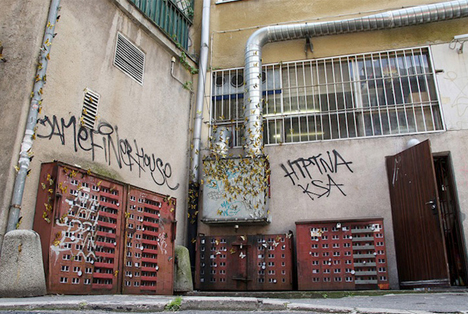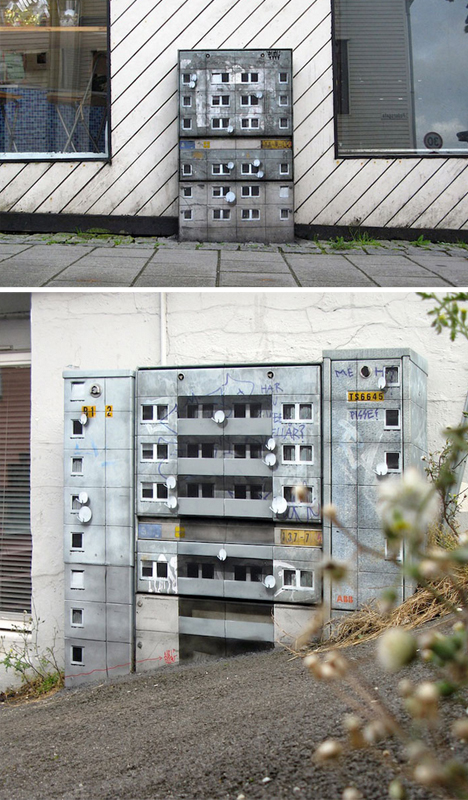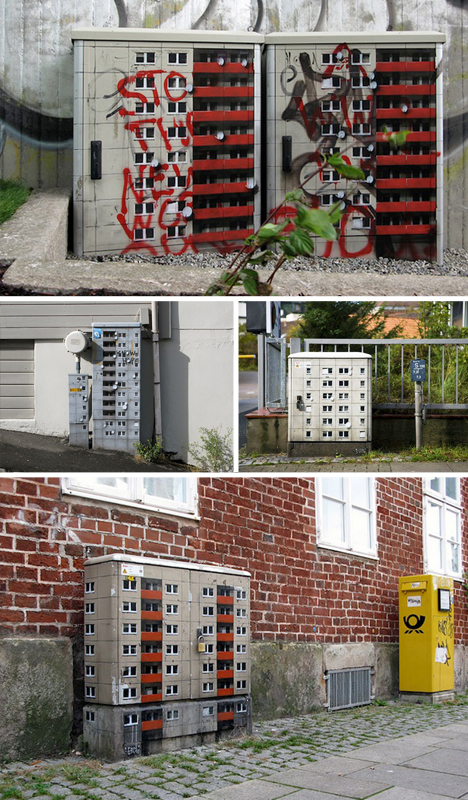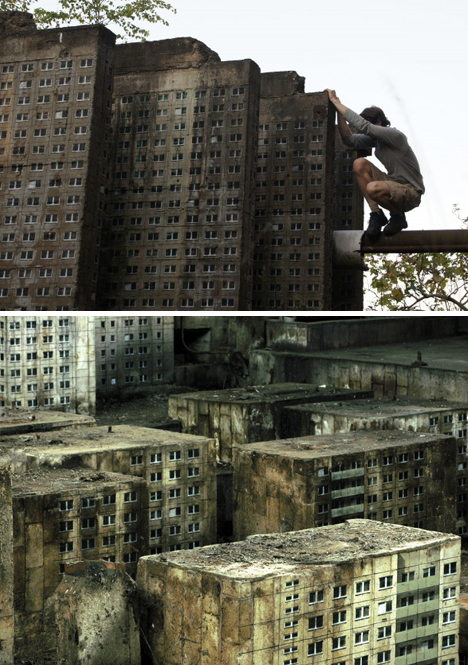Electrical boxes beware – Evol is back to up to his old tricks, turning urban fixtures and unused walls into tiny cityscapes using a deceptively simple toolbox comprised of cardboard, stencils and spray paint.
From process to execution, this artist is both scrappy and calculating, employing quick-and-dirty materials that are easy to obtain and fast to install, but with a remarkable eye for detail, right down to windows, balconies, satellite dishes and flower pots.
Dotting the sidewalks of Berlin, perhaps aptly at the urban intersection of where communist East once met democratic West, the faux structures themselves are almost relentlessly monotonous from a distance. The facades are just drab and generic enough style-wise to look (perhaps ironically) incredibly lifelike and believable.
Up close, these sprayed-in-place or pasted-on building faces exhibit not only convincing architectural details but also anticipated (yet always-unpredictable) marks of weathering, which in turn reinforce their apparent realism.
Le Corbusier, who many blame for the preponderance of ugly mass-produced architecture born of mid-century urban renewal, called buildings “machines for living in.” For better or worse, Evol seems content to continue this tradition at a smaller scale, relentlessly building whole cities worth of micro-machine habitats.




